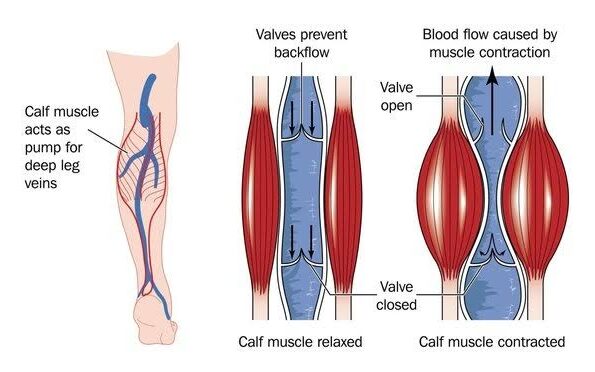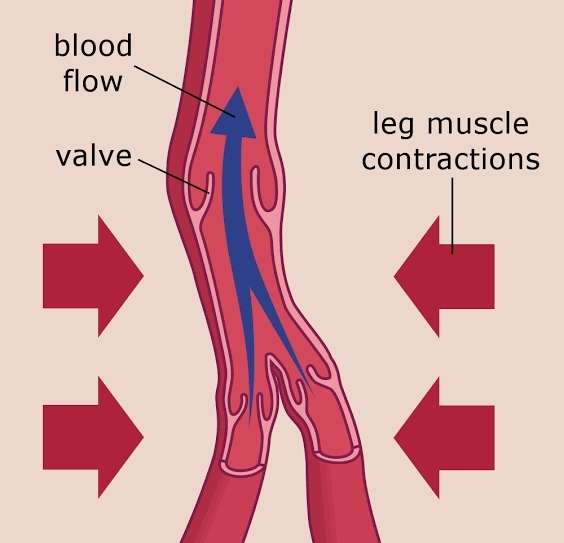The heart works only against the viscous resistance of the system, not against gravity, even in vascular loops above the heart in which the siphon principle operates. Veins must work against gravity to return blood the heart. The muscles of the leg help that process, and valves within the veins usually keep the moving blood from flowing back down toward the feet. Oxygenated blood from the heart passes through the aorta as it descends through the thorax and abdomen and into the pelvis. In the pelvis, the aorta splits into the left and right common iliac arteries that descend toward the legs. In many body regions, the pressure within the veins can be increased by the contraction of the surrounding skeletal muscle. This mechanism, known as the skeletal muscle pump, helps the lower-pressure veins counteract the force of gravity, increasing pressure to move blood back to the heart.




















